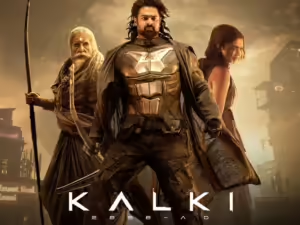The Cinematic Splendor of “Kalki”: A Modern Epic in Tamil Cinema

The world of Tamil cinema has always been a treasure trove of creativity, with filmmakers pushing boundaries and redefining genres. One of the most recent gems to emerge from this vibrant industry is the film Kalki. This movie not only showcases the talent of its creators but also highlights the evolving landscape of Indian cinema.
Plot and Themes
Kalki, directed by Raja Murugan, is an ambitious project that intertwines mythological themes with contemporary storytelling. The narrative centers around a fictional character named Kalki, who is seen as a modern-day reincarnation of the ancient warrior. The film delves into themes of justice, retribution, and moral dilemmas, creating a rich tapestry that resonates with both traditional and modern audiences.
The story is set against a backdrop of political and social turmoil, exploring how the protagonist navigates a world fraught with corruption and injustice. The film’s intricate plot weaves together elements of action, drama, and fantasy, making it a compelling watch from start to finish.
Cast and Performances
The film features an ensemble cast that brings its complex characters to life. Arjun Sarja, known for his versatile acting skills, plays the lead role of Kalki with an intensity that anchors the film’s emotional depth. His portrayal of the titular character is both powerful and nuanced, capturing the essence of a hero caught between ancient prophecies and modern realities.
Supporting roles are played by a talented group of actors, including Aishwarya Rajesh, Vivek, and Nassar. Each actor contributes significantly to the film’s dynamic, adding layers of complexity to the narrative and enhancing the overall viewing experience.
Direction and Cinematography
Raja Murugan’s direction is noteworthy for its innovative approach and attention to detail. The film’s pacing is expertly managed, balancing moments of high tension with quieter, introspective scenes. Murugan’s vision is brought to life through meticulous cinematography, which captures both the grandeur of the epic sequences and the intimacy of personal moments.
The use of visual effects and CGI in Kalki is particularly impressive, providing a modern edge to the mythological elements of the story. The film’s action sequences are both thrilling and well-choreographed, ensuring that audiences are on the edge of their seats.
Music and Soundtrack
The soundtrack of Kalki plays a crucial role in enhancing the film’s emotional impact. Composed by G.V. Prakash Kumar, the music is a blend of traditional motifs and contemporary sounds, reflecting the film’s thematic duality. Songs are strategically placed to accentuate key moments in the narrative, contributing to the overall immersive experience.
Reception and Impact
Upon its release, Kalki received a positive reception from both critics and audiences. Its ability to blend mythological storytelling with modern cinematic techniques has been praised, and the film has been noted for its ambitious scope and execution. The performances, particularly Arjun Sarja’s, have garnered acclaim, cementing the film’s status as a significant entry in Tamil cinema.
The film’s success also highlights the growing trend of exploring mythological themes through a contemporary lens, offering a fresh perspective on ancient tales. This approach not only appeals to traditional fans but also attracts a new generation of viewers who are eager to see these stories reimagined for today’s world.
Conclusion
Kalki stands out as a remarkable example of how Tamil cinema continues to innovate and evolve. Its blend of mythological depth, strong performances, and modern filmmaking techniques creates a cinematic experience that is both engaging and thought-provoking. As audiences continue to explore the boundaries of storytelling, Kalki serves as a testament to the dynamic and ever-expanding world of Indian cinema.